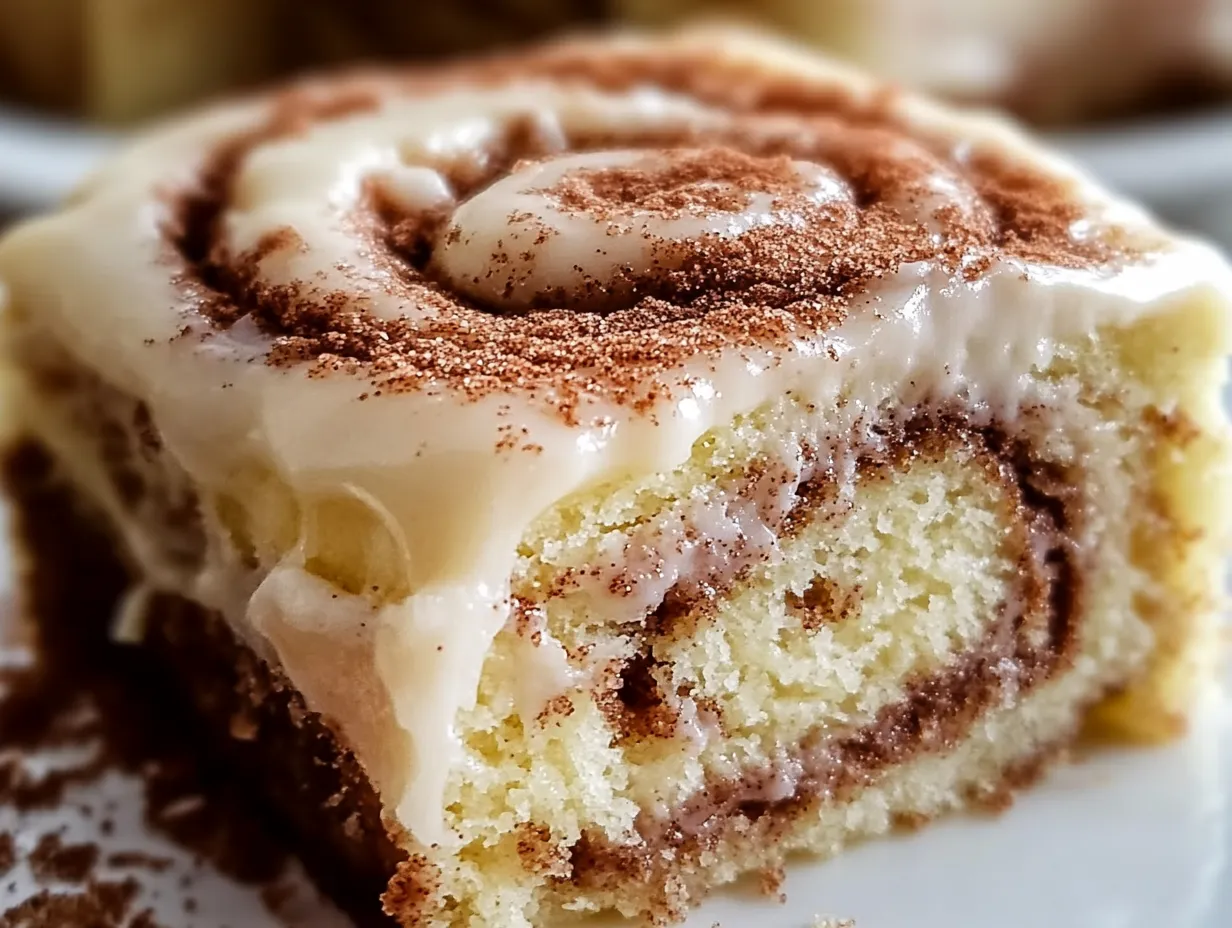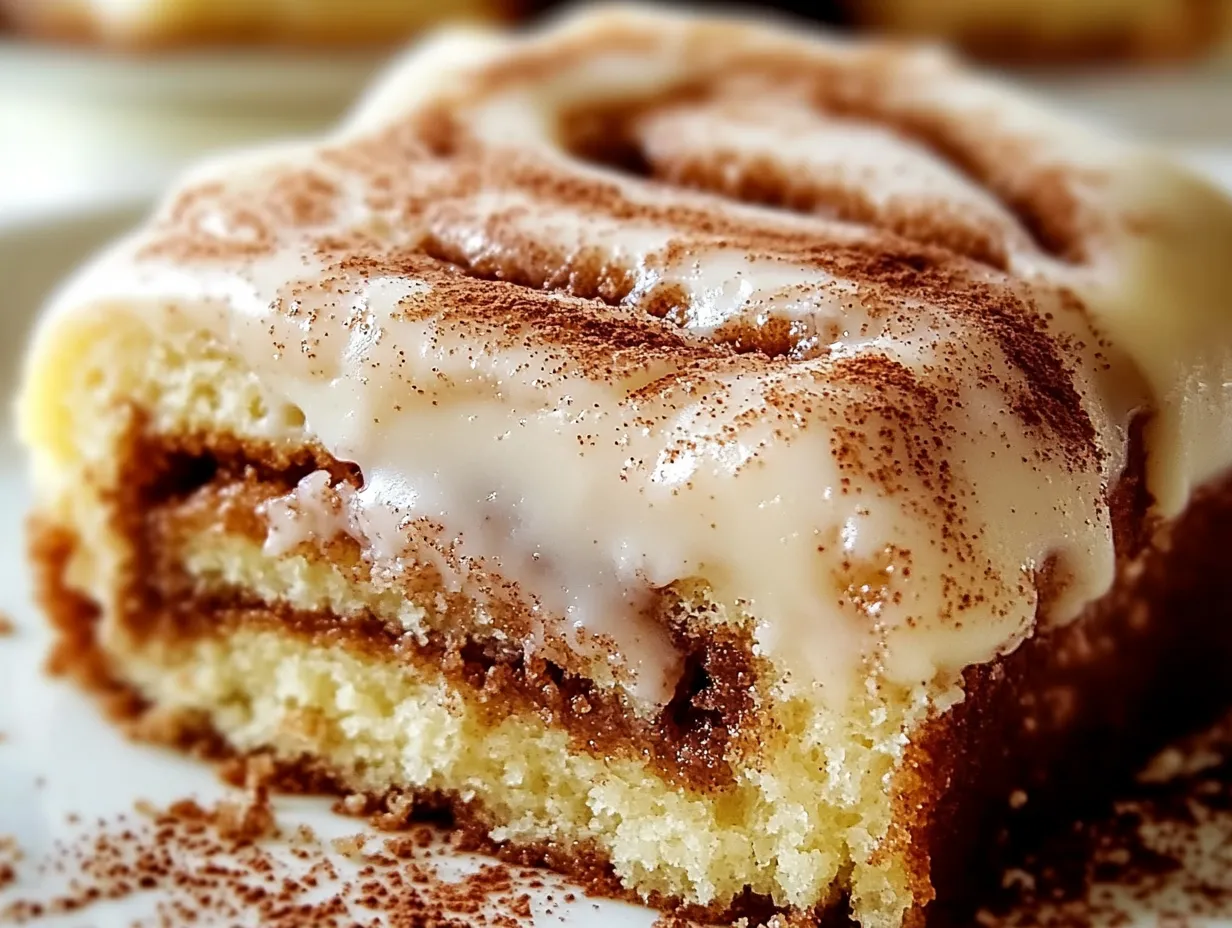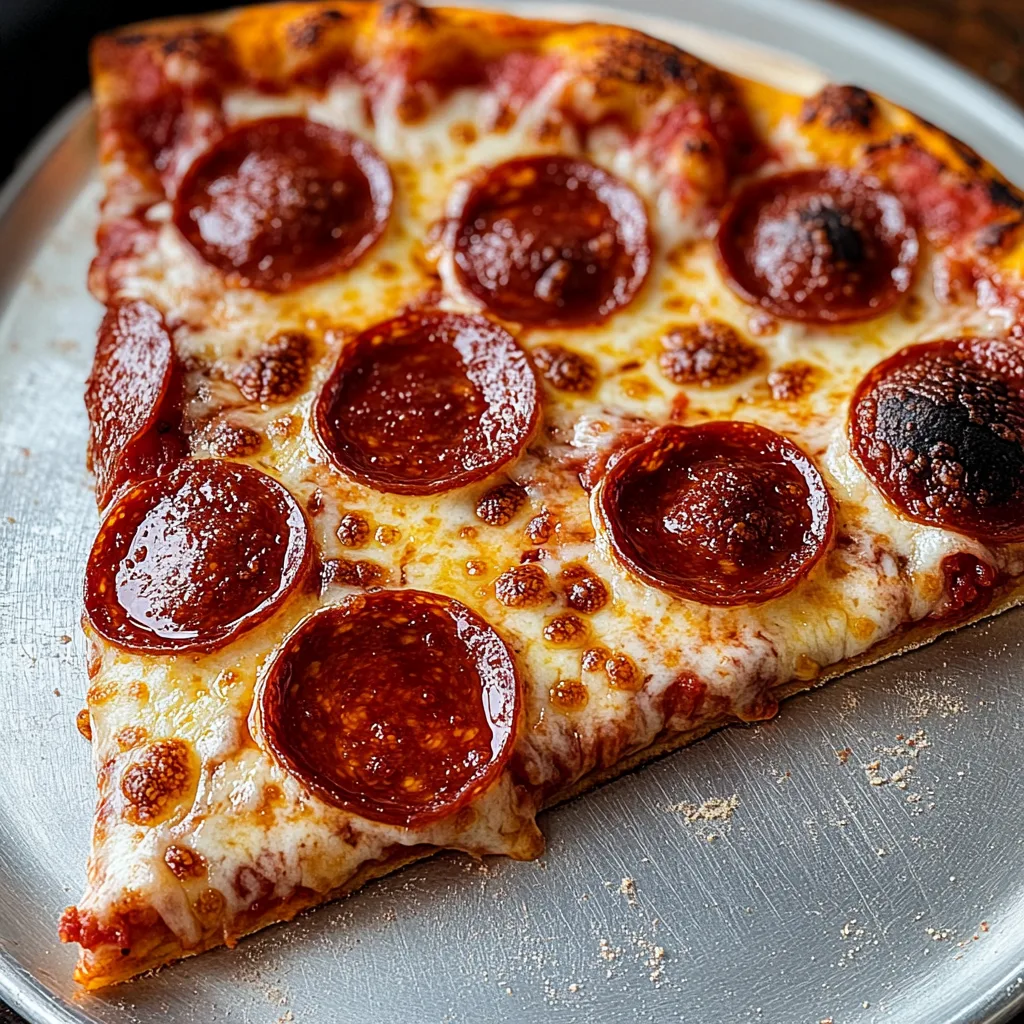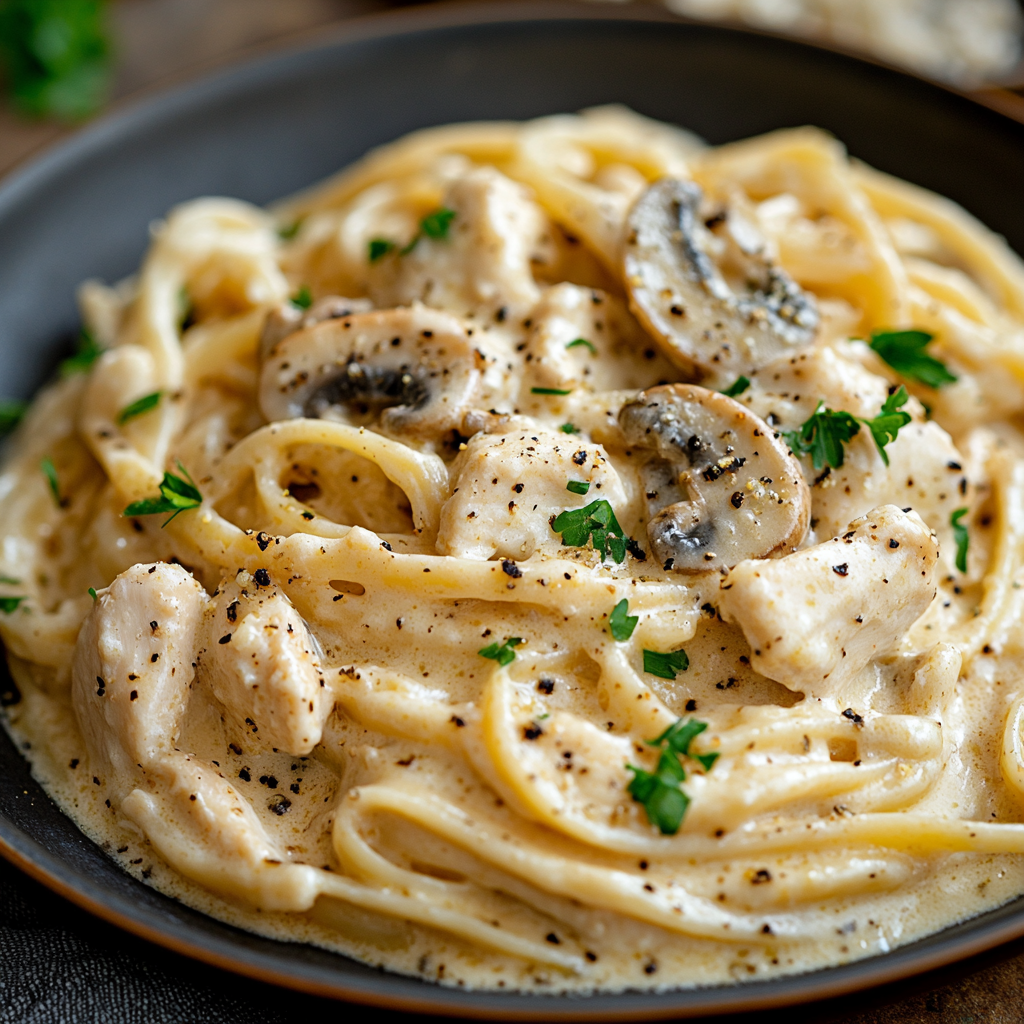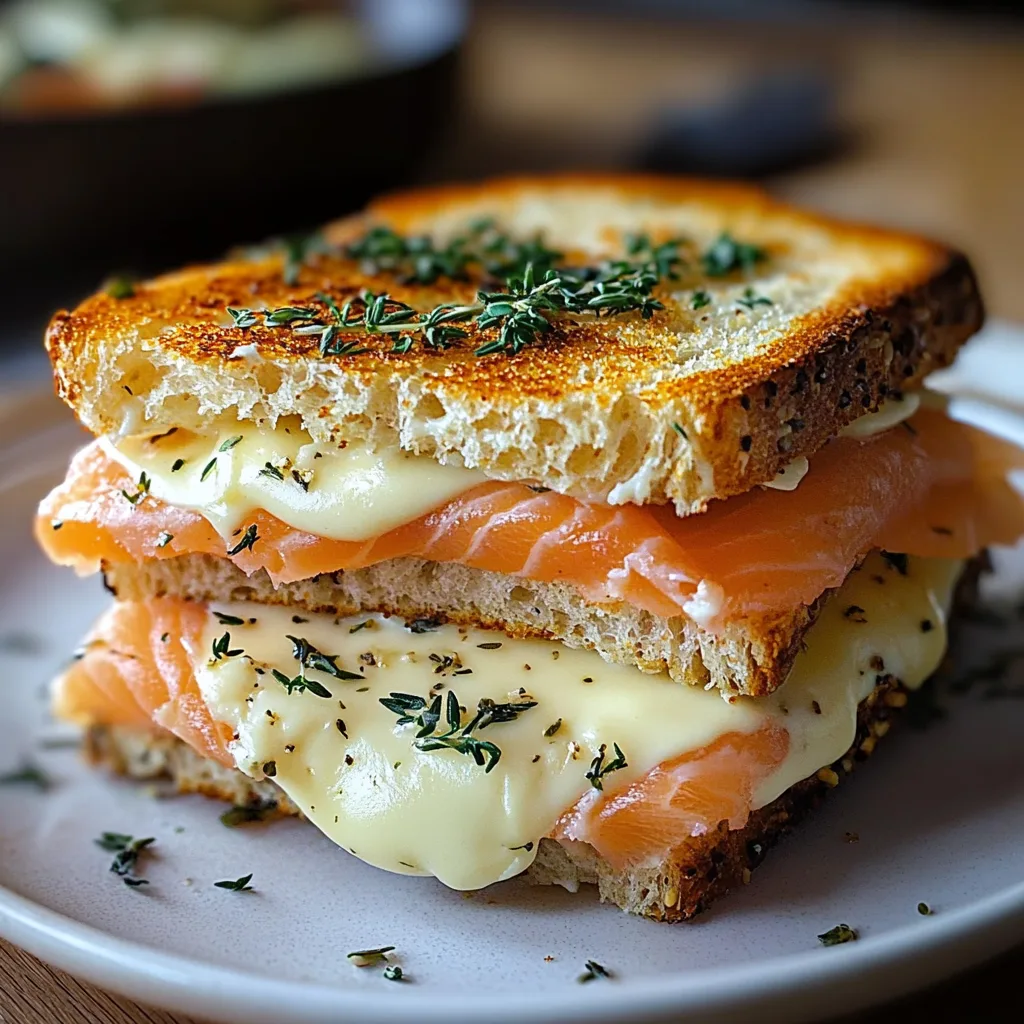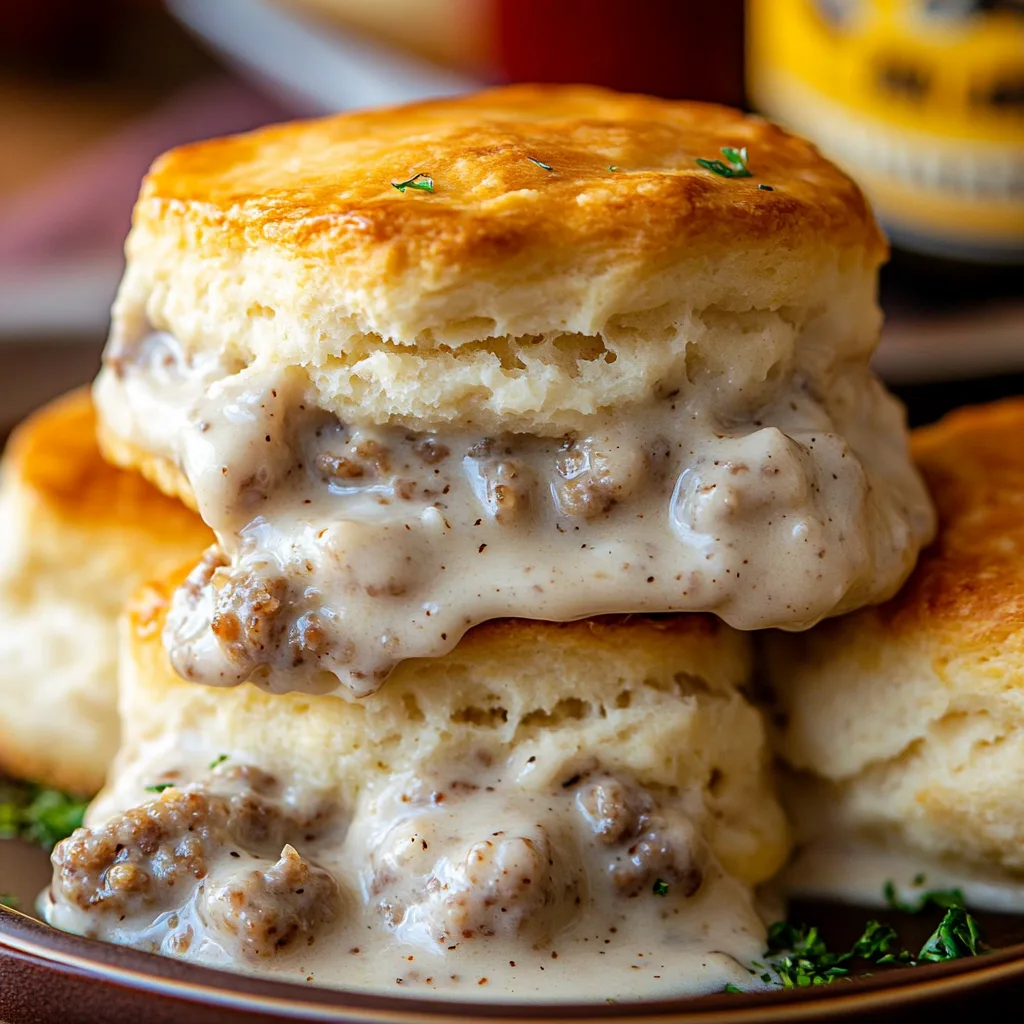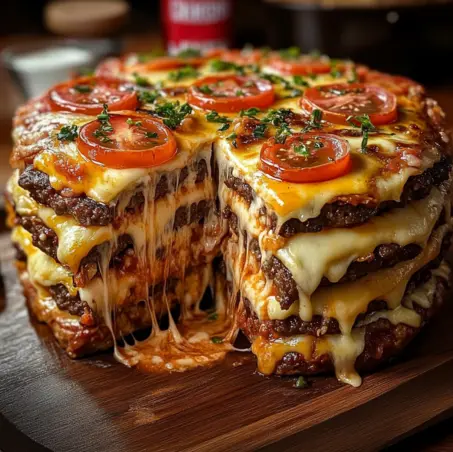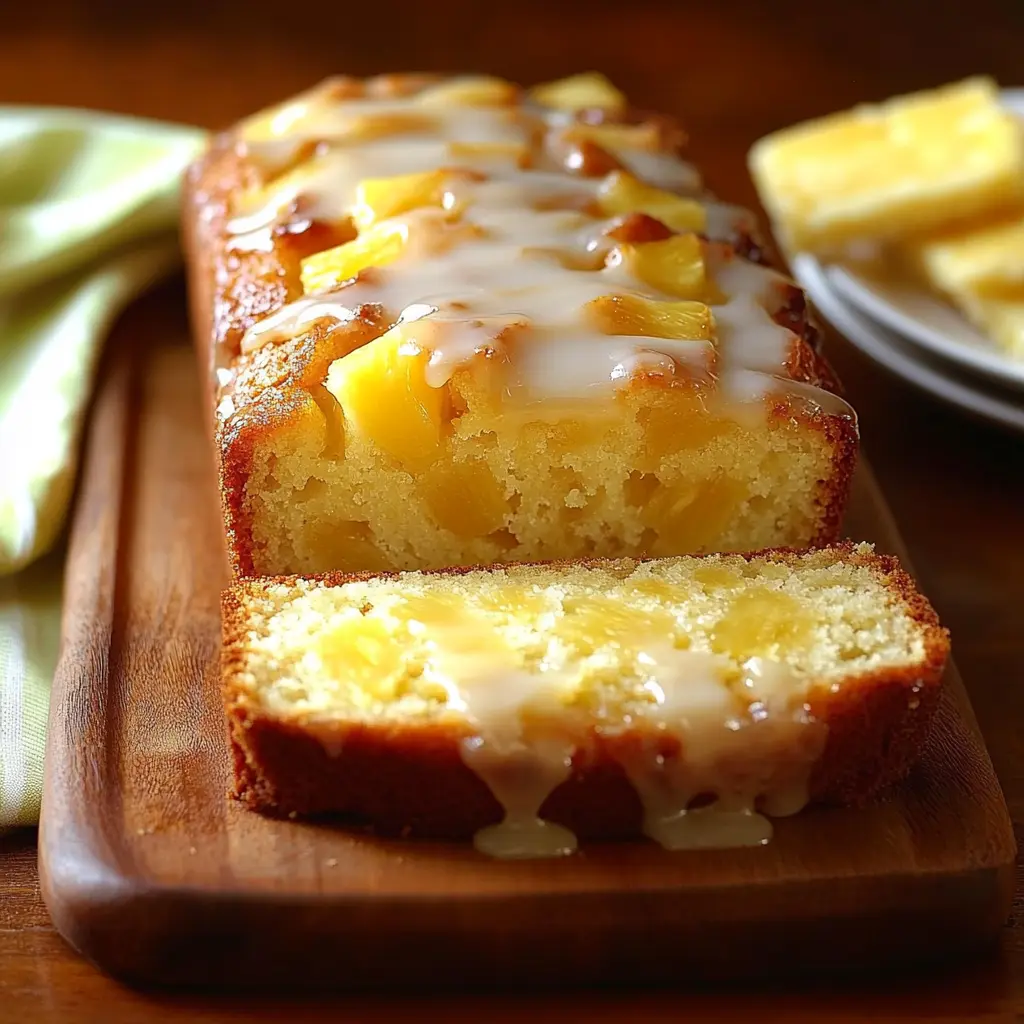Cinnamon roll cake is the perfect marriage of two beloved treats: the gooey, spiced sweetness of cinnamon rolls and the ease and versatility of a classic cake. This recipe takes the iconic cinnamon roll flavors — warm cinnamon, rich brown sugar, and creamy glaze — and transforms them into a soft, tender cake that anyone can make. It’s ideal for those who love the taste of cinnamon rolls but might not have the time or patience for yeast dough and multiple rising periods.
This cinnamon roll cake is a crowd-pleaser, perfect for gatherings, brunches, desserts, or even as an indulgent coffee break treat. It’s easy enough to whip up for any occasion, yet special enough to feel like a bakery-quality dessert. With simple, pantry-friendly ingredients like flour, sugar, butter, and cinnamon, this cake is both accessible and delicious. The buttery, brown-sugar cinnamon swirl throughout the batter creates a beautiful marbled effect, adding visual appeal and a delightful texture contrast.
The glaze drizzled on top completes the cake, making each slice a sweet, moist, and perfectly spiced bite. Whether you’re looking to impress guests or treat yourself, this cinnamon roll cake offers a delightful twist on a beloved classic, delivering all the cozy flavors you crave in a fraction of the time.
The ingredients in this cinnamon roll cake recipe work together to create a fluffy, flavorful, and moist dessert that brings all the comforting notes of a classic cinnamon roll. Here’s a breakdown of each ingredient’s role and why selecting quality, fresh ingredients can elevate the cake.
Flour provides the base structure of the cake. Using all-purpose flour gives the cake a tender crumb without making it too dense, perfect for absorbing the cinnamon swirl and glaze.
Milk adds moisture, creating a smooth batter and soft texture. Fresh, whole milk or full-fat alternatives add richness, but you can substitute non-dairy milk if needed.
Butter is essential for both flavor and tenderness. Melted butter in the batter adds richness, while softened butter in the cinnamon topping allows for easy swirling.
Sugar (white and brown) sweetens the cake and the cinnamon topping. Brown sugar in the topping also adds a hint of caramel flavor, enhancing the classic cinnamon roll taste.
Eggs act as a binder, providing structure and a bit of lift, contributing to the cake’s fluffy texture.
Baking powder is crucial for lift. Using fresh baking powder is essential to ensure proper rise, as it loses potency over time.
Vanilla extract deepens the flavor, adding a warm note that complements the cinnamon.
Cinnamon is the signature spice. Opt for fresh, high-quality ground cinnamon for the most aromatic and robust flavor.
Ensuring the freshness of ingredients like baking powder, milk, and cinnamon helps the cake reach its full potential, offering a light texture, appealing rise, and unbeatable aroma.
The bottom layer of this cinnamon roll cake combines simple ingredients to create a soft, fluffy base that perfectly complements the cinnamon swirl and glaze.
- Flour forms the cake’s foundation, giving it structure and a tender crumb. All-purpose flour is ideal, as it provides a balance between density and lightness, allowing the cake to stay soft yet sturdy enough to hold the cinnamon topping.
- Milk adds moisture to the batter, ensuring the cake has a smooth, cohesive texture. Whole milk is best for a rich, tender crumb, but non-dairy options like almond or oat milk can be substituted for those with dietary restrictions.
- Butter contributes richness and moisture, making each bite soft and flavorful. Melted butter blends easily into the batter, ensuring even distribution.
- White sugar sweetens the cake base, balancing the flavors without overpowering the cinnamon topping. It also helps create a soft, delicate texture.
- Eggs act as a binder and provide lift, giving the cake a light, airy structure.
- Baking powder is the leavening agent, helping the cake rise and achieve a fluffy texture.
- Vanilla extract adds warmth and depth, enhancing the overall flavor profile.
Each ingredient plays a crucial role in the cake’s taste and texture, and with simple substitutions like non-dairy milk, this cake can easily accommodate different dietary needs.
The cinnamon topping is what gives this cake its signature, indulgent flavor, reminiscent of a freshly baked cinnamon roll. Each ingredient in the topping contributes to its rich, caramel-like texture and warm, spiced sweetness.
- Butter is the base of the topping, adding richness and moisture that help the topping spread and swirl through the cake. Softened butter blends smoothly with the sugar, creating a creamy mixture that melts beautifully into the batter as it bakes.
- Brown sugar is essential for that deep, caramelized sweetness. Unlike white sugar, brown sugar contains molasses, which enhances the topping’s flavor and gives it a slightly gooey texture. This caramel-like quality creates a satisfying contrast with the fluffy cake base.
- All-purpose flour helps bind the topping ingredients, giving the mixture a thicker consistency that allows it to be swirled into the cake without sinking to the bottom.
- Cinnamon is the star of the show, providing that classic, comforting warmth that makes this cake irresistible. Using high-quality ground cinnamon ensures a robust, aromatic flavor that permeates each bite.
Together, these ingredients create a thick, flavorful topping that adds visual appeal and a burst of cinnamon sweetness in every swirl.
The glaze on top of this cinnamon roll cake adds a sweet, finishing touch, making each bite delightfully moist and indulgent. This simple glaze requires just a few ingredients, yet it brings both visual appeal and a burst of flavor to the cake.
- Confectioners’ sugar is the base of the glaze, providing a smooth, melt-in-your-mouth texture and just the right level of sweetness. Its fine powdery consistency allows it to dissolve easily into the milk, creating a smooth, pourable glaze.
- Milk acts as the liquid base, helping to achieve the desired consistency for drizzling. Whole milk offers a richer result, but any milk, including non-dairy options, can be used. The amount of milk can be adjusted to make the glaze thinner for a delicate drizzle or thicker for a more substantial coating.
- Vanilla extract adds a hint of warmth and aroma, enhancing the glaze’s sweetness with a subtle depth. This complements the cinnamon flavor of the cake, tying all the elements together.
To customize the glaze’s thickness, start by adding milk gradually until the glaze reaches your desired consistency — more milk for a thin drizzle or less for a thicker, more opaque coating. This simple yet flavorful glaze brings the cake together with a bakery-style finish.
Preheating the oven to 350°F (175°C) is essential for achieving even baking in this cinnamon roll cake. Starting with a fully heated oven ensures the cake begins to rise immediately, creating a soft, fluffy texture without uneven spots or sinking.
Properly preparing the baking pan is equally important to prevent sticking and make sure the cake releases smoothly. For this recipe, a 9×13-inch pan is ideal. Grease the pan thoroughly with butter or non-stick spray, paying special attention to the corners and edges. For extra assurance, you can line the pan with parchment paper, allowing for easy lifting and mess-free cleanup. These steps help the cake bake evenly and come out beautifully intact.
To prepare the bottom layer of this cinnamon roll cake, start by gathering all your ingredients: flour, milk, sugar, eggs, baking powder, vanilla extract, salt, and melted butter. Having everything ready will streamline the process and ensure you don’t miss any steps.
- Combine the dry ingredients: In a large mixing bowl, add 3 cups of all-purpose flour, 4 teaspoons of baking powder, and ¼ teaspoon of salt. Whisk these together to distribute the leavening agent evenly, which helps the cake rise uniformly.
- Mix the wet ingredients: In a separate bowl, beat together 1 ½ cups of milk, 2 eggs, and 2 teaspoons of vanilla extract until well combined. This step ensures the eggs are fully broken down, making it easier to incorporate into the dry ingredients without overmixing.
- Add the sugar and melted butter: Pour the white sugar and melted butter into the wet ingredients, stirring until everything is smooth. The melted butter should be slightly cooled to avoid curdling the eggs.
- Combine wet and dry ingredients: Pour the wet mixture into the bowl with the dry ingredients. Gently fold them together with a spatula or a wooden spoon until just combined. Be careful not to overmix, as this can develop gluten in the flour, leading to a dense cake texture. The batter should be smooth but slightly thick.
For flavor variations, consider adding a hint of nutmeg or ginger for a warm spice blend, or fold in chopped nuts like pecans or walnuts for added crunch. Once the batter is mixed, pour it evenly into the greased 9×13-inch pan, spreading it to create a smooth base for the cinnamon topping.
To create the rich, cinnamon-infused topping, gather softened butter, brown sugar, flour, and ground cinnamon. The butter should be at room temperature to achieve a smooth, spreadable texture.
- Combine the ingredients: In a medium bowl, add 1 cup of softened butter, 1 cup of brown sugar, 2 tablespoons of all-purpose flour, and 1 tablespoon of ground cinnamon.
- Mix thoroughly: Using a hand mixer or a sturdy spatula, beat the ingredients together until smooth and creamy. The softened butter should easily blend with the sugar, creating a thick, caramel-like paste. This texture is essential for the topping to hold its shape while swirling, allowing it to remain distinct within the cake batter.
- Ensure even distribution: Scrape down the sides of the bowl as you mix to ensure all ingredients are well incorporated. This step prevents any lumps and allows the cinnamon flavor to be evenly distributed throughout the mixture, providing a consistent taste in every swirl.
This smooth, spreadable topping is now ready to be dropped over the cake batter, where it will create delicious pockets of cinnamon sweetness.
Creating the cinnamon swirl is a fun and visually appealing step that brings the cake’s signature marbled effect to life. To begin, take spoonfuls of the prepared cinnamon mixture and drop them evenly across the surface of the cake batter in the pan. Space the spoonfuls about an inch apart, covering the batter surface without clustering too much in one area. This will allow the cinnamon flavor to be well distributed throughout the cake.
Once you’ve placed the spoonfuls, use a butter knife to gently swirl the cinnamon mixture into the batter. Insert the knife just below the surface and move it in a figure-eight or zigzag motion across the pan. Aim for broad, sweeping strokes rather than small, tight swirls, as this will create an attractive marbling without fully mixing the two layers. Be careful not to over-swirl; too much mixing can cause the cinnamon mixture to blend too deeply into the batter, resulting in a less defined marbling effect.
The goal is to achieve a balance between cake and cinnamon topping in every bite. By creating visible ribbons of cinnamon, you’ll end up with a cake that has both visual appeal and the classic cinnamon roll flavor. This technique enhances both the look and taste of the finished cake.
To bake the cinnamon roll cake, place the prepared pan in a preheated oven at 350°F (175°C). Bake for 25-30 minutes, keeping a close eye on the cake as it nears the end of the baking time. The edges should turn a light golden brown, and the center should rise evenly with a slight spring when gently pressed.
To check for doneness, insert a toothpick into the center of the cake. If it comes out mostly clean with just a few moist crumbs (not wet batter), the cake is ready. Avoid overbaking, as this can lead to a dry texture instead of the desired soft, cake-like consistency.
Oven temperatures can vary, so adjust as needed. If using a glass or ceramic pan, you may need to add a few extra minutes to the baking time, as these materials retain heat differently. For smaller or larger pans, keep in mind that the baking time may vary accordingly. A well-baked cake will be moist and tender, making it the perfect base for the glaze.
To prepare the glaze for your cinnamon roll cake, start by combining 2 cups of confectioners’ sugar, 5 tablespoons of milk, and 1 teaspoon of vanilla extract in a medium bowl. Whisk these ingredients together until smooth and creamy, ensuring there are no lumps in the mixture. The glaze should have a pourable consistency, thick enough to coat the cake but thin enough to drizzle.
If the glaze appears too thick, add more milk, one teaspoon at a time, until it reaches the desired consistency. For a thinner, delicate drizzle, slightly more milk will create a lighter texture. Conversely, if the glaze is too thin and you prefer a thicker, more opaque drizzle, add additional confectioners’ sugar, one tablespoon at a time, and stir until smooth.
This glaze should be easily drizzled over the warm cake, creating a sweet, bakery-style finish that complements the cinnamon flavors perfectly.
To achieve a professional-looking glaze, drizzle it over the warm cake once it’s out of the oven and has cooled slightly, allowing the glaze to melt slightly into the top for a perfect finish. Use a spoon or pour the glaze from a small measuring cup, moving back and forth across the cake in a zigzag motion to cover evenly. For an extra touch, you can let some glaze drip down the sides for a bakery-style presentation.
For the best flavor, serve the cake while it’s still warm, as this enhances the soft, gooey texture reminiscent of a freshly baked cinnamon roll. This cake pairs beautifully with a hot cup of coffee, tea, or even a glass of milk, making it a delightful addition to any brunch or dessert spread.
For a bit of extra flair, garnish with a light sprinkle of powdered sugar or a dash of ground cinnamon. These simple finishing touches elevate the presentation, making the cake as visually appealing as it is delicious.
To keep any leftover cinnamon roll cake fresh, store it in an airtight container at room temperature for up to two days. For longer storage, refrigerate the cake, where it will stay fresh for up to five days. Refrigeration helps maintain moisture and prevents the glaze from becoming too sticky.
When you’re ready to enjoy another slice, gently reheat individual portions in the microwave for 15-20 seconds to restore the cake’s warm, gooey texture. For the best results, cover the slice with a damp paper towel to prevent it from drying out. This quick reheat makes the cake taste fresh-baked every time.
To perfect your cinnamon roll cake, avoid common pitfalls that can impact texture and flavor. Overmixing the batter can lead to a dense, chewy cake, so mix just until the ingredients are combined. Also, avoid overbaking; check the cake early, as overbaking can result in a dry texture instead of the desired soft, cake-like consistency.
For flavor variations, consider adding chopped nuts like pecans or walnuts to the cinnamon topping for a bit of crunch. Raisins or chocolate chips can be folded into the batter for added sweetness and texture, giving the cake a unique twist that complements the cinnamon.
To adapt this recipe for dietary restrictions, substitute gluten-free all-purpose flour to make it gluten-free. For a dairy-free version, replace the milk with almond, soy, or oat milk, and use a dairy-free butter alternative. These adjustments allow for delicious customization without sacrificing flavor or texture, making the cake accessible to more dietary needs.
Can I use a different pan size?
Yes, you can use a different pan size, but be sure to adjust the baking time. For example, if using an 8×8-inch pan, the cake will be thicker and may require an additional 10-15 minutes to bake. A larger pan, such as an 11×15-inch, will yield a thinner cake and bake faster, so start checking for doneness about 5 minutes earlier than the recipe suggests.
Can I make this cake ahead of time?
Absolutely! This cake can be made a day in advance. Allow it to cool completely, then cover tightly with plastic wrap or store it in an airtight container at room temperature. For the freshest taste, add the glaze just before serving, or cover the glazed cake to prevent drying out.
Can I freeze cinnamon roll cake?
Yes, this cake freezes well. Let it cool completely, then wrap individual slices or the whole cake in plastic wrap and place in an airtight container. To reheat, thaw in the refrigerator or at room temperature and warm individual slices in the microwave for 15-20 seconds.
What other spices can I use?
For a twist on traditional flavor, consider adding a pinch of nutmeg, cardamom, or ginger to the cinnamon topping. These spices add warmth and depth, giving the cake a unique and aromatic flair.
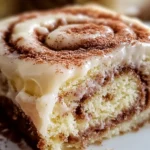
Cinnamon Roll Cake Recipe
- Author: Christophe
Description
This Cinnamon Roll Cake has all the flavors of a classic cinnamon roll but in a soft, tender cake form! Swirled with a rich, buttery cinnamon layer and finished with a sweet vanilla glaze, this cake is perfect for brunch, dessert, or a cozy breakfast treat.
Ingredients
Bottom Layer:
- 3 cups all-purpose flour
- 1 ½ cups milk
- 1 cup white sugar
- 2 eggs
- 4 teaspoons baking powder
- 2 teaspoons vanilla extract
- ¼ teaspoon salt
- ¼ cup butter, melted
Top Layer:
- 1 cup butter, softened
- 1 cup brown sugar
- 2 tablespoons all-purpose flour
- 1 tablespoon ground cinnamon
Glaze:
- 2 cups confectioners’ sugar
- 5 tablespoons milk
- 1 teaspoon vanilla extract
Instructions
1️⃣ Preheat the oven to 350°F (175°C). Grease a 9×13-inch baking pan to prevent sticking.
2️⃣ Prepare the bottom layer: In a large bowl, mix together 3 cups of flour, milk, white sugar, eggs, baking powder, vanilla extract, and salt until smooth. Add the melted butter and stir until well combined. Pour the batter evenly into the prepared baking pan.
3️⃣ Prepare the cinnamon topping: In a separate bowl, beat together the softened butter, brown sugar, 2 tablespoons of flour, and cinnamon until smooth and creamy.
4️⃣ Create the swirl: Drop spoonfuls of the cinnamon mixture over the batter in the pan. Use a knife to swirl it into the batter, creating a marbled effect throughout the cake.
5️⃣ Bake: Place the pan in the preheated oven and bake for 25-30 minutes, or until a toothpick inserted into the center comes out with only a few moist crumbs. Avoid overbaking for a soft, cake-like texture.
6️⃣ Make the glaze: While the cake is baking, prepare the glaze by mixing the confectioners’ sugar, milk, and vanilla extract in a bowl until smooth.
7️⃣ Glaze and serve: Once the cake is finished baking, drizzle the glaze over the warm cake for a sweet finish. Serve warm for the best flavor and texture.
Notes
- Storage: Store leftovers covered at room temperature for up to 2 days or refrigerate for up to 5 days. Warm individual slices in the microwave for a fresh-out-of-the-oven taste.
- Optional Add-ins: Try adding chopped nuts, such as pecans or walnuts, to the cinnamon layer for a bit of crunch.


